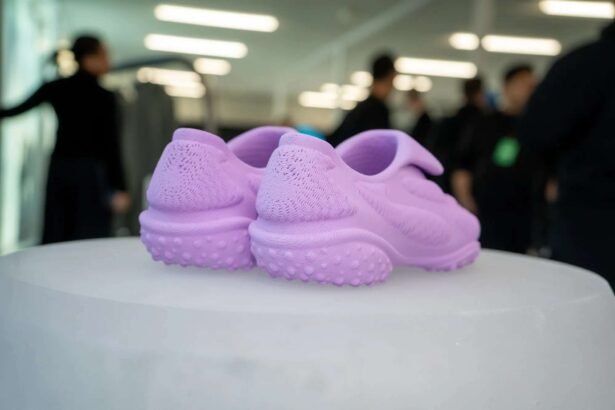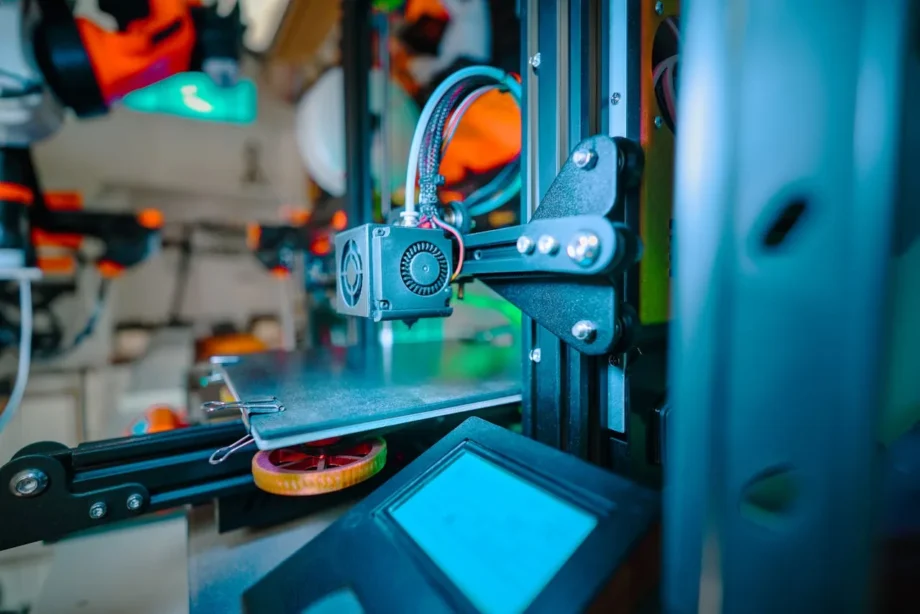As I’ve stated many times before, 3D printing is poised to revolutionize the fashion industry. Once seen as a mere experimental tool for fashion students, it has now stepped onto the world stage, gaining attention from major designers and luxury brands. In July, Chanel’s Paris couture show featured a groundbreaking moment when Karl Lagerfeld incorporated 3D printing into his jacket designs, blending 20th-century fashion with 21st-century technology. What used to take designers months to move from runway to retail could soon be streamlined, thanks to the incredible potential of 3D printing.
The Origins and Evolution of 3D Printing in Fashion
3D printing isn’t a new technology; it has been around since the 1980s. However, it’s only in recent years that we’ve begun to fully understand its capabilities and apply them to industries beyond manufacturing and prototyping. The fashion world, known for its constant pursuit of innovation, is now embracing this technology with open arms.
The First 3D Printed Shoe
One of the earliest and most notable examples of 3D printing in fashion came from Julian Hakes, an architect-turned-shoe designer. In 2011, during London Fashion Week, Hakes debuted the first-ever 3D printed shoe. The process behind creating these shoes is fascinating. Designers start by crafting their vision using specialized 3D printing software. Once the design is finalized, they select the material, send the digital file to the printer, and watch as their creation comes to life, layer by layer. It’s akin to a high-tech photocopier that builds objects rather than reproducing images.
The Technical Side: How 3D Printing Works
Understanding the basics of how 3D printing works can give us insight into why it’s such a game-changer for fashion.
Material Selection and Printing Process
Designers have a variety of materials at their disposal, ranging from plastics to metals to even biodegradable substances. The printer itself can operate using different methods. Some use filament, which is heated until it becomes liquid and then solidified into layers. Others use liquid resin, solidified by a light beam. Each method has its advantages and challenges, but the end result is a tangible product created from a digital design.
Post-Printing: Assembly and Finishing
Once the printing is complete, the product isn’t quite ready for the runway. Designers often need to glue, solder, or otherwise assemble the various printed pieces. This can be time-consuming and requires precision, but it allows for unprecedented creativity in design.
Challenges in 3D Printing for Fashion
While the potential is immense, the current state of 3D printing in fashion isn’t without its hurdles.
Material Limitations
One of the biggest challenges is the material itself. Currently, most 3D printed fabrics are stiff and plasticky, which doesn’t lend itself well to the fluidity and flexibility often desired in fashion. However, researchers and designers are continually experimenting with new materials that could offer more comfortable and versatile options.
Cost and Time
Another significant challenge is the cost and time involved in 3D printing. The technology, while more accessible than ever, is still expensive, and printing a single garment can take hours, if not days. This limits its use in fast fashion but offers incredible potential for high-end, custom designs.
3D Printing in Footwear: A Growing Trend
Despite the challenges, one area where 3D printing is making significant strides is in footwear.
Customization and Comfort
3D printing allows for unparalleled customization in shoe design. Brands like Adidas and Nike have already begun to explore this, offering shoes with 3D printed soles that can be customized to fit the wearer’s foot perfectly. This not only enhances comfort but also improves performance, particularly in athletic footwear.
Sustainability and Waste Reduction
Another benefit of 3D printing in footwear is its potential for sustainability. Traditional shoe manufacturing involves a lot of waste, but 3D printing is an additive process, meaning materials are only used where needed. This reduces waste and can make the production process more environmentally friendly.
The Role of 3D Printing in High Fashion
High fashion has always been about pushing boundaries, and 3D printing is the latest tool designers are using to do just that.
Couture and Runway Shows
As mentioned earlier, Karl Lagerfeld’s use of 3D printing in Chanel’s couture show was a landmark moment. But he’s not alone. Designers like Iris van Herpen have been using 3D printing to create stunning, otherworldly designs that would be impossible to achieve with traditional methods. These creations are as much art as they are fashion, showcasing the potential of 3D printing to redefine what’s possible in design.
Accessories and Jewelry
It’s not just clothing that’s benefiting from 3D printing. Accessories and jewelry are also being revolutionized by this technology. Designers can create intricate, delicate pieces that are impossible to make by hand. The precision and detail achievable with 3D printing open up new possibilities for creativity.
The Future of 3D Printing in Everyday Fashion
While 3D printing is currently making waves in high fashion and footwear, its potential to impact everyday fashion is enormous.
Mass Customization
Imagine a future where you can walk into a store, have your measurements taken, and walk out with a garment that’s been 3D printed to fit you perfectly. This is the promise of mass customization, made possible by 3D printing. It could lead to a world where every piece of clothing is tailored to the individual, offering a perfect fit and personalized style.
On-Demand Fashion
Another exciting possibility is on-demand fashion. Rather than mass-producing clothing that may or may not sell, brands could produce items only when they’re ordered. This would reduce waste, lower costs, and allow for more experimental and unique designs. It’s a model that could transform the fashion industry from one based on excess to one focused on efficiency and creativity.
3D Printing and Sustainability in Fashion
Sustainability is a hot topic in fashion, and 3D printing has the potential to play a significant role in making the industry more environmentally friendly.
Reducing Waste
As mentioned earlier, 3D printing is an additive process, which means it only uses the material that’s needed. This contrasts with traditional methods, where large amounts of fabric may be cut away and discarded. By reducing waste, 3D printing can help fashion become more sustainable.
Recyclable and Biodegradable Materials
Researchers are also exploring the use of recyclable and biodegradable materials in 3D printing. This could further reduce the environmental impact of fashion, allowing for garments and accessories that are not only beautiful but also eco-friendly.
3D Printing in Fast Fashion: A Distant Dream?
While 3D printing holds promise, its application in fast fashion remains a challenge.
Cost Constraints
Fast fashion is all about producing large quantities of clothing quickly and cheaply. Currently, 3D printing is too slow and costly to compete with traditional manufacturing methods in this space. However, as technology advances and costs come down, it’s possible that we could see 3D printing making inroads into fast fashion.
Material Innovations Needed
For 3D printing to be viable in fast fashion, significant innovations in materials are needed. The stiff, plasticky fabrics currently produced by 3D printers don’t meet the demands of fast fashion consumers, who expect soft, flexible, and comfortable clothing.
How 3D Printing Could Change the Fashion Supply Chain
Beyond the design and production of clothing, 3D printing has the potential to revolutionize the entire fashion supply chain.
Localized Production
One of the most exciting possibilities is localized production. Rather than manufacturing clothing in one part of the world and shipping it across the globe, 3D printing could allow for production to happen closer to the consumer. This would reduce shipping costs, shorten lead times, and allow brands to respond more quickly to trends.
Reducing Inventory
Another potential benefit is the reduction of inventory. With 3D printing, brands could produce clothing on-demand, reducing the need for large inventories of unsold stock. This could lead to a more efficient and profitable fashion industry.
The Ethical Implications of 3D Printing in Fashion
While 3D printing offers many benefits, it also raises important ethical questions.
Job Displacement
One of the biggest concerns is job displacement. As 3D printing becomes more widespread, it could reduce the need for traditional manufacturing jobs. This could have significant social and economic impacts, particularly in countries where garment manufacturing is a major industry.
Intellectual Property Concerns
Another ethical issue is intellectual property. 3D printing makes it easier to replicate designs, which could lead to increased instances of counterfeiting and intellectual property theft. The fashion industry will need to grapple with these issues as 3D printing becomes more prevalent.
Conclusion
3D printing is set to transform the fashion industry in ways we can only begin to imagine. From high fashion to everyday wear, the possibilities are endless. While challenges remain, the potential benefits of 3D printing—from customization and sustainability to on-demand production—are too significant to ignore. As technology continues to evolve, we’re likely to see 3D printing becoming an increasingly important part of the fashion world.
FAQs
1. How is 3D printing currently being used in fashion?
3D printing is being used to create custom footwear, intricate jewelry, and high-fashion garments that push the boundaries of design.
2. What are the main challenges of 3D printing in fashion?
The main challenges include the cost of the technology, the time required to print garments, and the limitations of current materials.
3. How could 3D printing make fashion more sustainable?
3D printing can reduce waste by only using the material needed to create a garment. Researchers are also exploring the use of recyclable and biodegradable materials in 3D printing.
4. Will 3D printing ever be used in fast fashion?
While 3D printing is currently too slow and costly for fast fashion, advancements in technology and materials could make it viable in the future.
5. What are the ethical implications of 3D printing in fashion?
The ethical implications include potential job displacement and intellectual property concerns as designs become easier to replicate.




